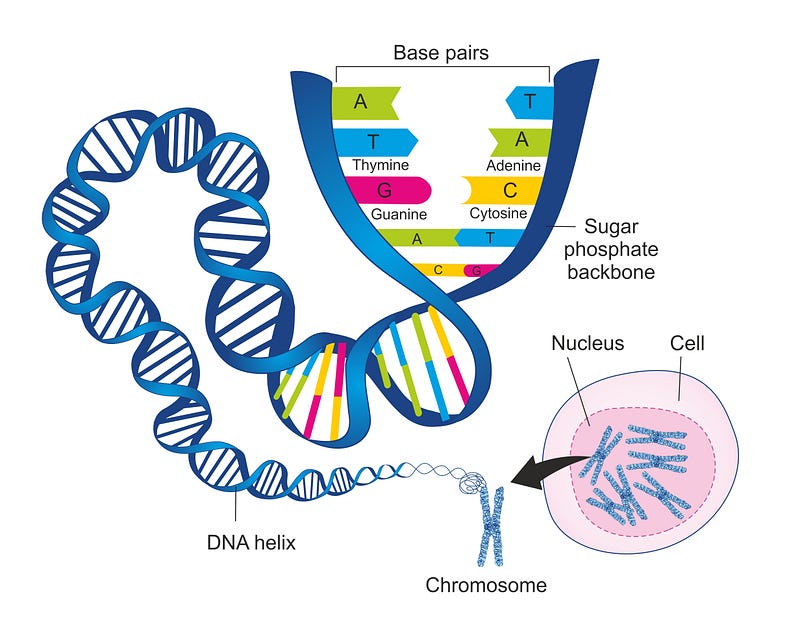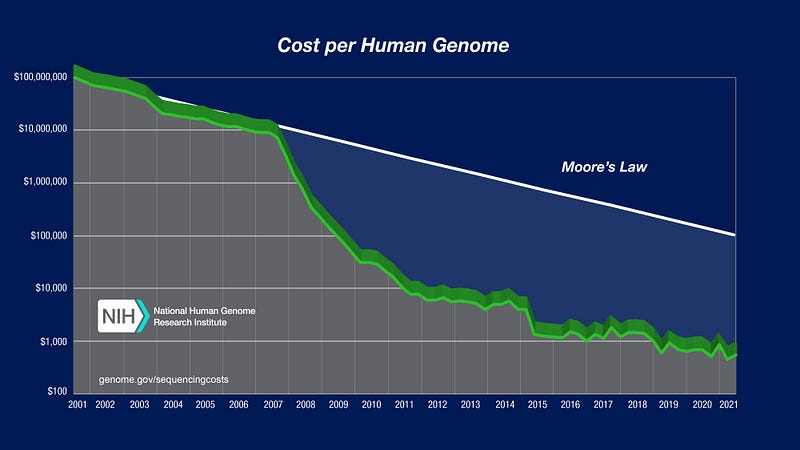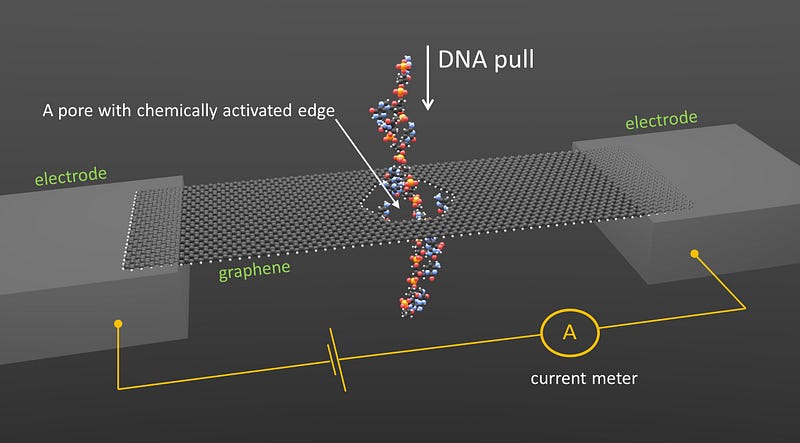Unlocking the Secrets of DNA with Graphene Technology
Written on
Chapter 1: Understanding DNA and Its Importance
If you grew up studying biology, you might remember learning about genetics through tools like Punnett squares, which illustrated why individuals might have brown or blue eyes. While this was an engaging way to introduce basic genetic principles, there’s a vast world of information contained within our DNA that often goes unexplored. For instance, your genetic makeup can reveal whether you're predisposed to excel as a sprinter or a long-distance runner. Moreover, certain rare genetic disorders, including cystic fibrosis and sickle cell anemia, stem from single gene mutations. By analyzing your DNA, we can definitively identify these risks, along with potential predispositions to common diseases such as cancer and diabetes. Access to this genetic data empowers individuals to make informed health decisions.
Every person carries a wealth of personalized health insights encoded in their DNA. But how can we access and utilize this critical information? The answer lies in graphene, a material that has gained popularity for its remarkable properties. Let’s delve deeper into the role of graphene in DNA sequencing!
Section 1.1: The Process of DNA Sequencing
DNA sequencing is the method of determining the precise order of nucleotides within a specific segment of DNA. This can involve sequencing small portions, segments of the genome, or the entire genome, making it essential for interpreting the genetic information contained within our DNA.
Before diving further, it's important to clarify that DNA sequencing is distinct from DNA genotyping. The two processes utilize different technologies and yield different outcomes. While DNA genotyping identifies genetic variants present in an individual, it does not provide the full picture.

To visualize this, think of your DNA as a book. DNA genotyping resembles flipping through selected pages, identifying specific words. Companies like 23andMe and AncestryDNA leverage this method to offer genealogical insights. Though cost-effective and swift, they only analyze about 0.02% of your genome. In contrast, DNA sequencing allows for a comprehensive reading of entire chapters or even the whole book.

The DNA sequence consists of four bases: Adenine (A), Thymine (T), Cytosine (C), and Guanine (G). The human genome comprises approximately 3 billion of these base pairs, arranged into 23 chromosome pairs within each cell's nucleus. Each chromosome hosts numerous genes, which provide the instructions for protein synthesis. Thus, the sequence of these four letters dictates our biological identity.

Historically, DNA sequencing was a labor-intensive and costly endeavor. The first complete human genome sequencing required a global collaboration and an investment of around $1 billion. Fortunately, advancements in technology have made it significantly more accessible; today, sequencing your entire genome can cost approximately $1,000, with projections suggesting it could soon drop to $100.
Section 1.2: The Role of Graphene in DNA Sequencing
Graphene-based DNA sequencers represent a promising frontier in biotechnology. Nanotechnology, which involves manipulating materials on an atomic scale (1 to 100 nanometers), is key to enhancing DNA sequencing capabilities. The biological processes in our bodies operate at the nanoscale, making graphene—a two-dimensional carbon structure—ideal for this purpose. Its one-atom thickness, approximately 0.35 nanometers, aligns perfectly with the spacing between DNA bases.

Researchers propose that DNA sequences can be read using a graphene nanopore device. This innovative approach involves suspending a sheet of graphene with a small opening. Electrodes at either end apply a voltage, and as a DNA strand passes through the nanopore, variations in electric current indicate the identity of each base pair. Graphene's unique properties make it particularly suitable for this application, allowing for the resolution of individual bases.
Despite the existence of nanopore sequencers utilizing other materials, integrating graphene could dramatically enhance sequencing technology. Currently, graphene nanopore devices are still undergoing research and development, but their potential is immense.
Chapter 2: Exploring the Future of DNA Sequencing
As we continue to explore the intersections of nanotechnology and genetics, the future of DNA sequencing looks promising. Graphene's unique attributes may pave the way for more efficient, cost-effective, and accurate sequencing methods, fundamentally transforming our understanding of genetics and personalized medicine.
If you found this article intriguing, consider exploring these related topics:
- What Is Nanotechnology and Where Is the Field Today?
- 3 Ways Scientists Can Unlock New Technologies by Working at the Nanoscale
- Want to Make Contact with Aliens? Here’s How to Do It, According to Science.
References: